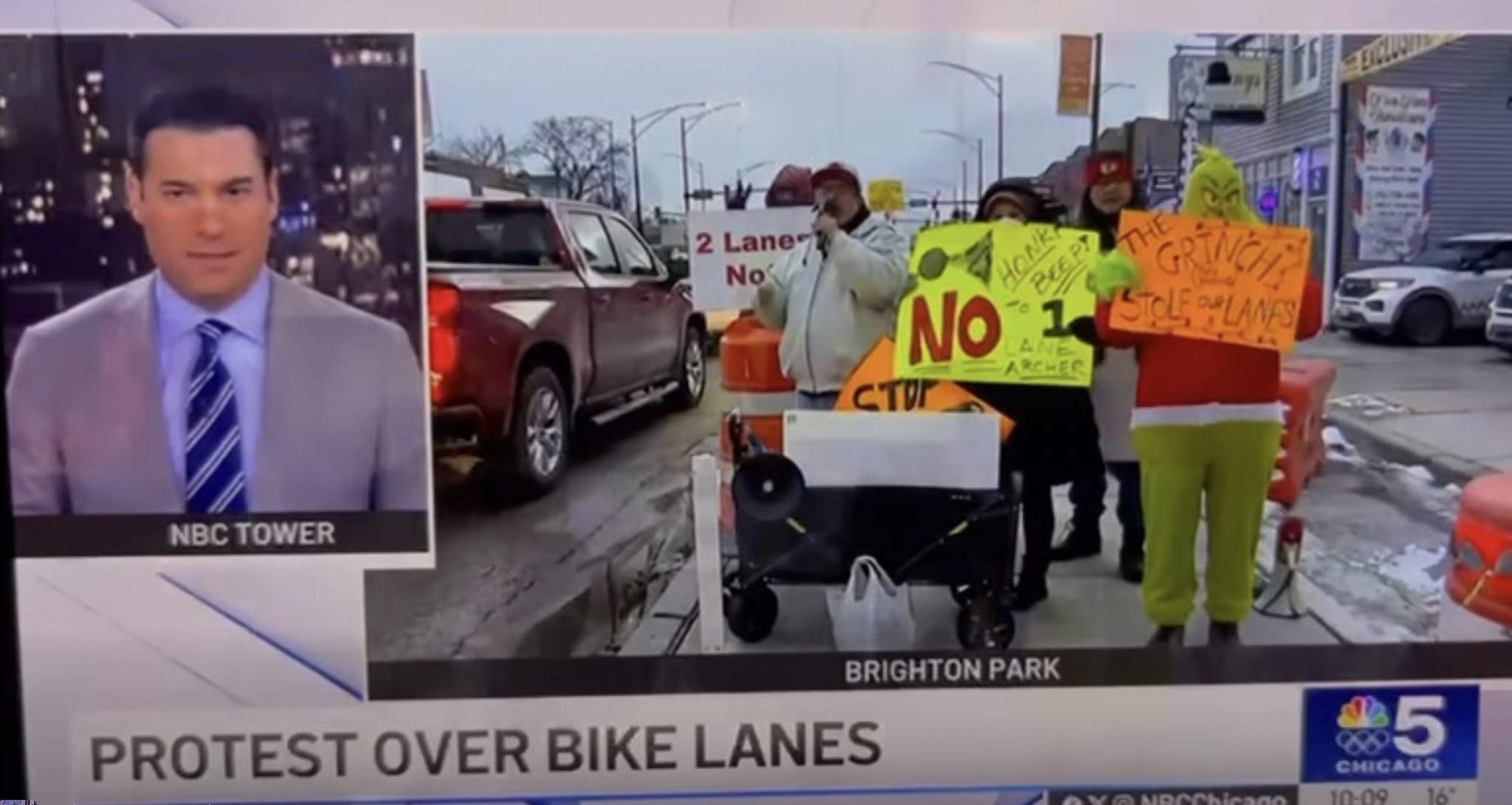What would it cost to retrofit the entire United States to be reasonably bikeable?

It all began with this idle question on Twitter. Bike advocates in the U.S. love to talk about incremental changes, small victories, baby steps. But, I wondered, what if we went further? What if we just went ahead and retrofitted the entire country to accommodate and even encourage bicycling? All at once, one big investment, a one-time federal spending appropriation?
I pose a lot of idle questions like this one; this time someone responded with an exact number:
@ellyblue The FHWA pilot project spent about $100/ per capita to significantly improve NMT in typical communities http://t.co/ef5OvwJLg2
— Todd Litman (@LitmanVTPI) April 25, 2014
Todd Litman’s answer was surprisingly simple: $100 per person. That’s what was spent, he pointed out, in four communities that were part of a major pilot project in active transportation funding a few years back [PDF].
I’m not talking Amsterdam-level bike-friendliness here -- even in my wildest thought experiments I know better than to imagine that could or should be created overnight.
I’m talking more like Minneapolis -- one of those four pilot cities and Bicycling Magazine's number-one Bike-Friendly City in the country. It’s not perfect — but it’s a much, much better place to bike than most U.S. cities, even in its iciest winters.
Could the whole country get Minneapolized for just $100 a head? Would that be enough to set the trend in motion to create real, lasting, long term change? Even the Netherlands had to start somewhere.
The U.S. population currently clocks in at 313.9 million people. So by this measure, the cost of a pretty darn good bike retrofit would cost $31.4 billion. Let's round it up to $32 billion.
$32 billion.
It’s a big number, even in the general scope of federal transportation spending. But it’s hardly out of reach.
In terms of federal transportation dollars, the amount is about 9 percent of the total cost of the Senate's transportation proposal. A hefty chunk for sure. But unlike the rest of that money -- most of which will be sunk into money-losing, debt-raising programs and roads for cars that require greater and greater spending each year -- this one-time investment in bicycling would actually earn money on a number of levels: improving local retail economies, boosting safety, creating jobs, and perhaps most of all improving health outcomes and reducing health care spending.
Almost none of these benefits are specific to people who ride bicycles. Sure, if you’re able to ditch your car for a bike, you can turn your personal financial life around, and this $32 billion investment could help millions of Americans do just that. But ultimately, it’s not about bicycles at all. Societal improvements that happen to be great for biking end up helping everyone, including people who will never get on a bike.
Yes, $32 billion is a made up number. (Pro tip: all numbers are.) Suburban, urban, rural areas all have different needs. Places with a lot of bridges are different than places with a lot of hills. Old cities are different from new cities. Each city is exceptional in its own way. If we did the math on these variations and exceptions, perhaps the total cost would be higher. Then again, it might be much, much lower. (Our country’s non-urban areas are full of wide, underutilized roads, and paint is cheap).
My hunch, though, is that any savings would be balanced out by the necessary policy of applying these great bikeability improvements equitably -- not just focusing on urban cores and up and coming neighborhoods as is currently typical of bike planning programs, but on every community in the country.
Just for perspective, here are some examples of what else $32 billion will get you:
Or we could have a country where we could all have the choice to get around actively, humanely, economically, and without massively screwing each other over for generations to come.
Federal spending isn’t the end-all-be-all of transportation funding. But as Minneapolis has shown, it can powerfully unlock local matching funds. More importantly, a boost in new projects can unleash the enormous reverberations and positive economic impact that an increase in bicycling can bring to entire communities. And that’s priceless.




